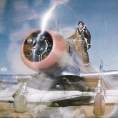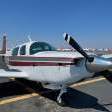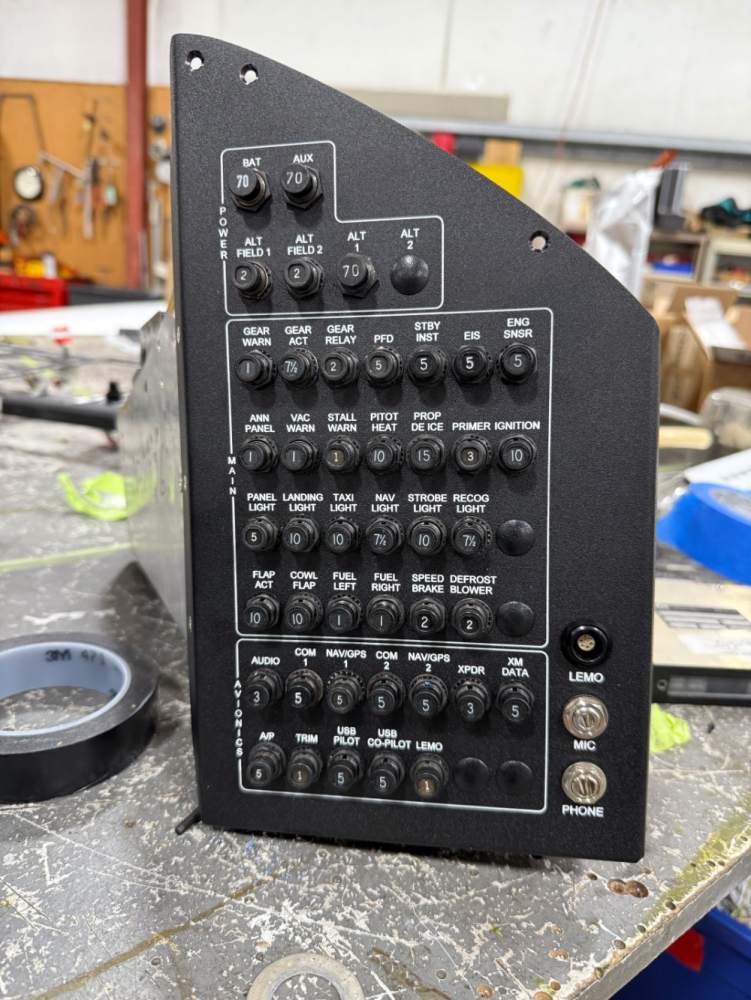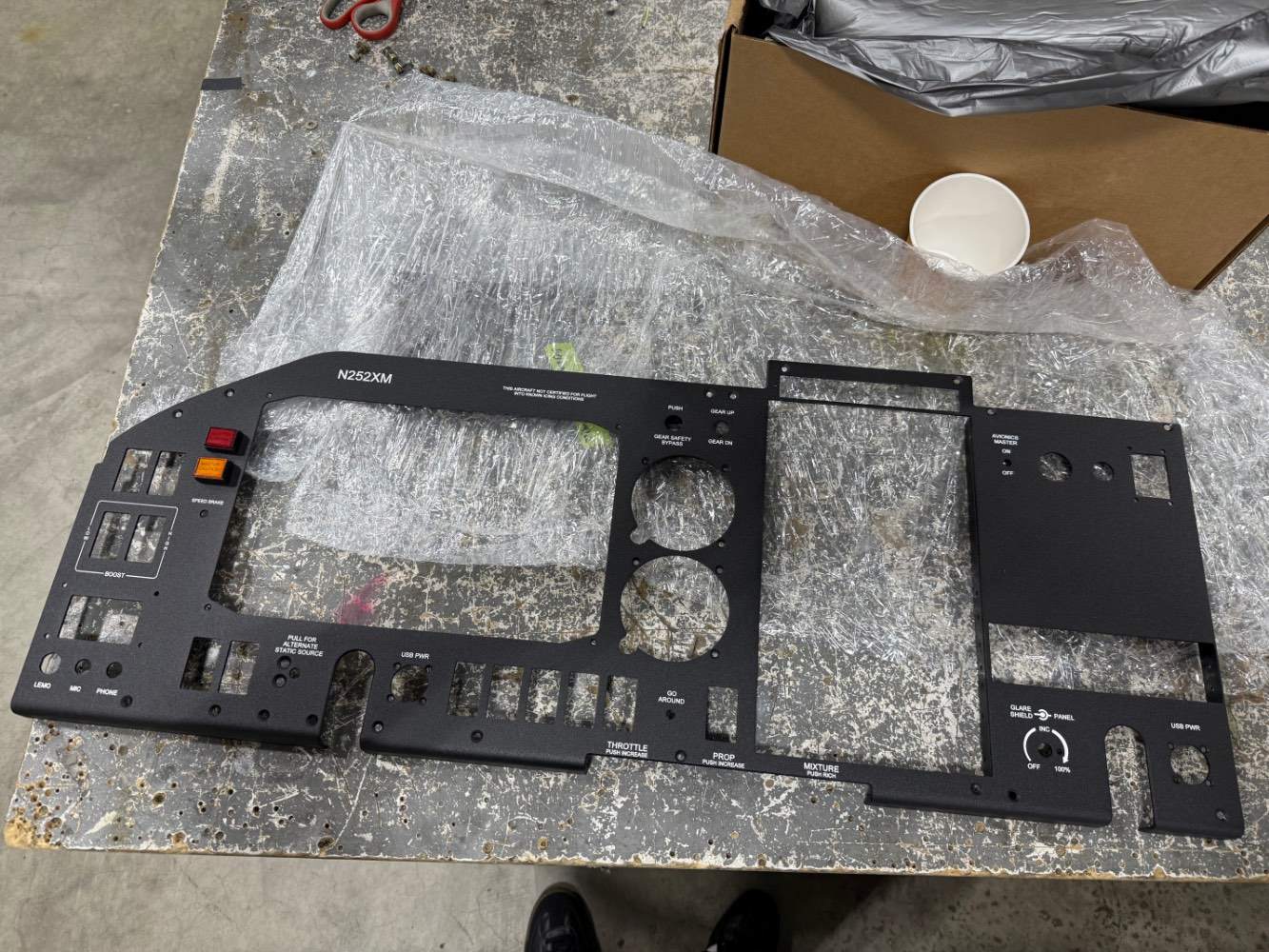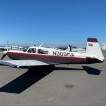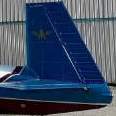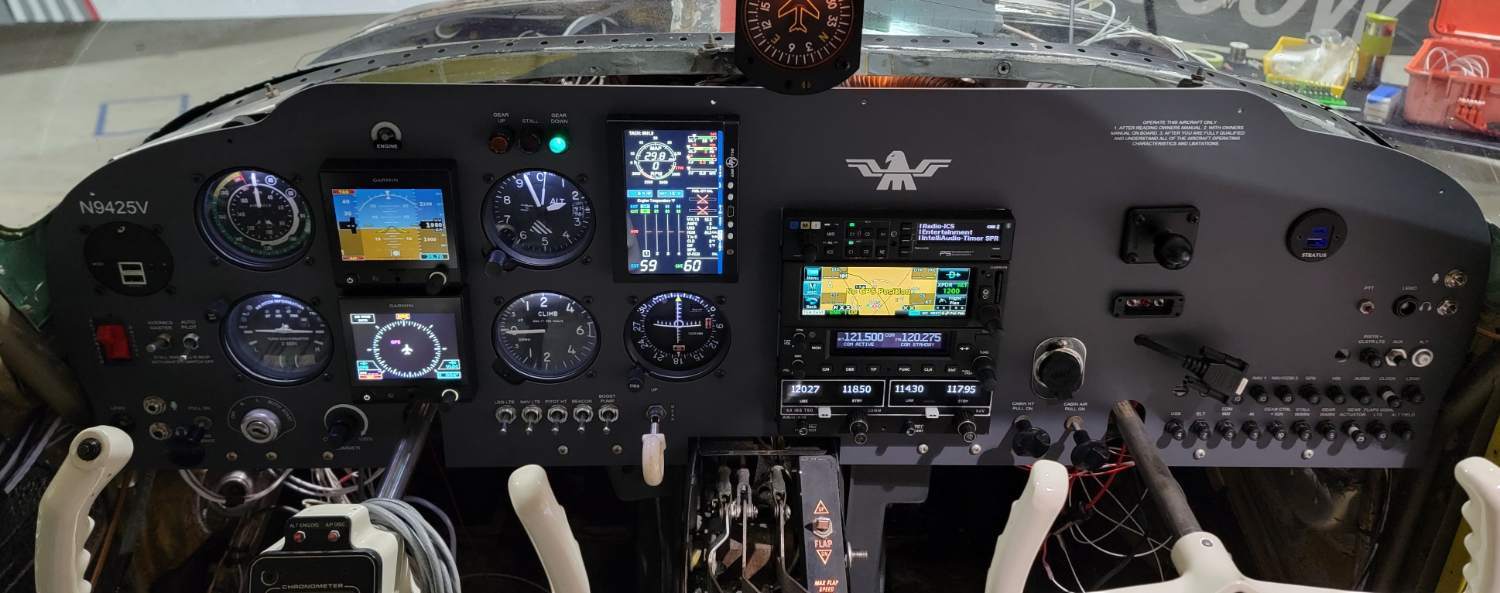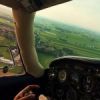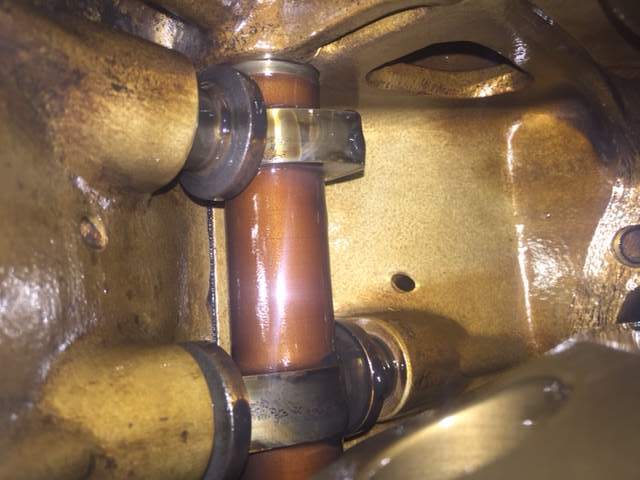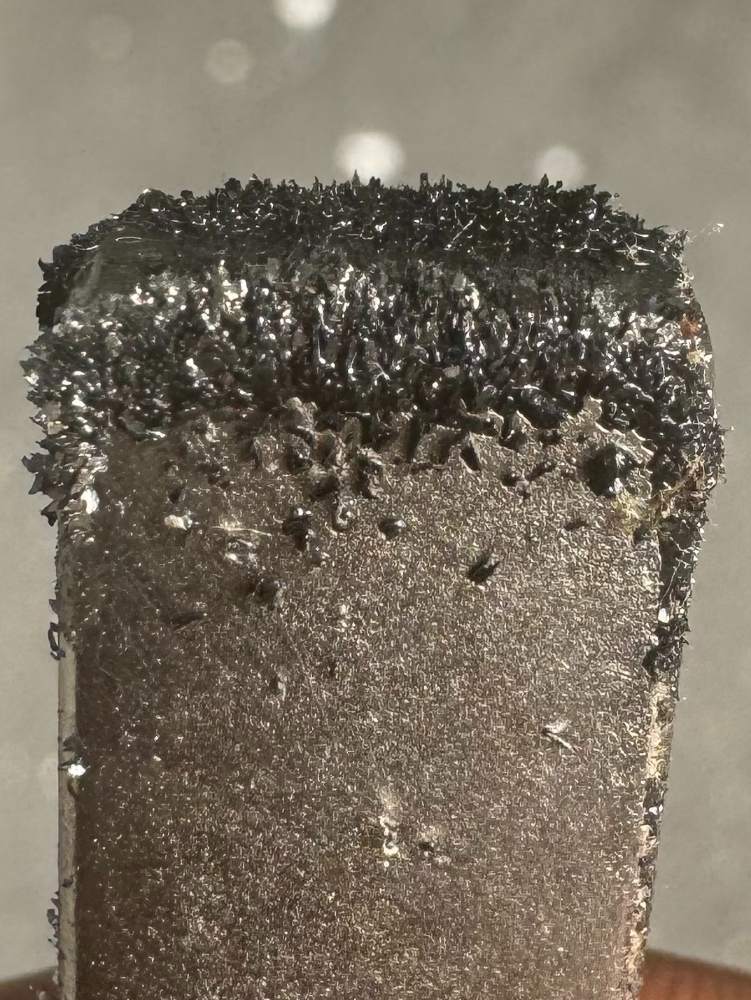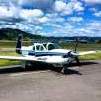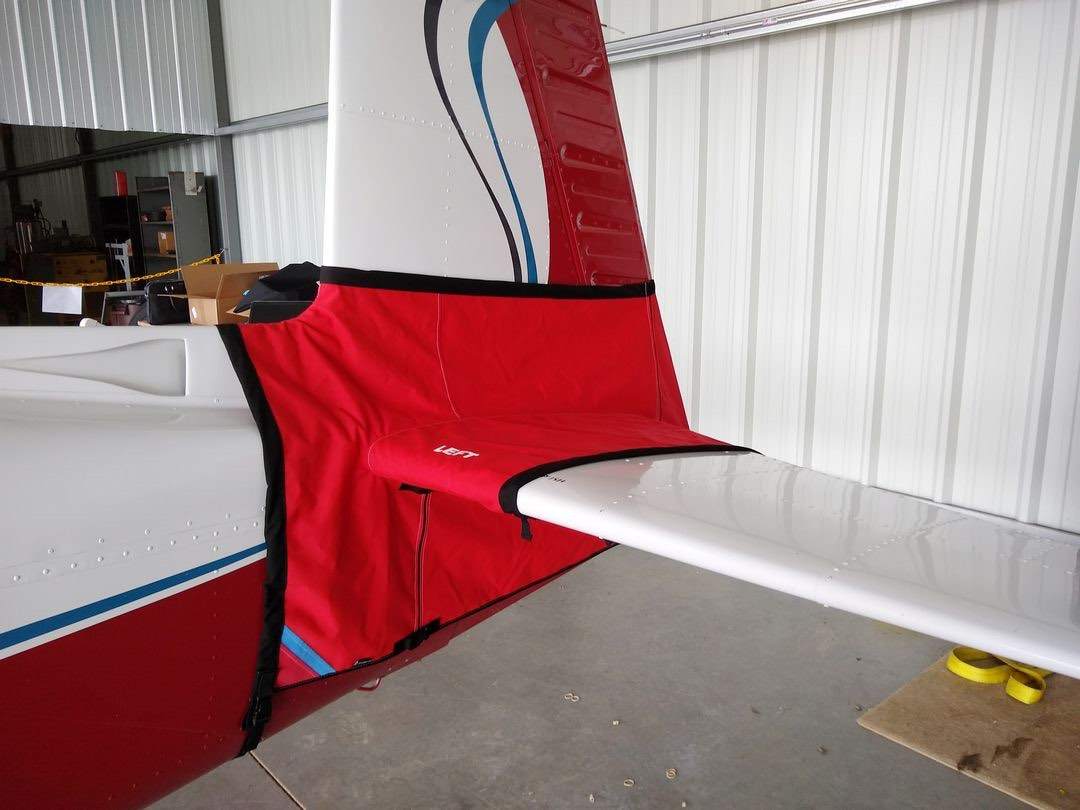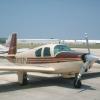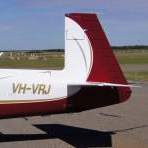Leaderboard
Popular Content
Showing content with the highest reputation on 01/20/2025 in all areas
-
It’s been a while without an update on this thread! After a lot of minute adjustments, thanks to yours truly, the panel fabrication was finished mid-December and we are now nearing the completion of the project. To be honest, EA Panels was amazing to work with and boy their work is beautiful. And can’t thank Crown at KPAE enough for their attention to detail and working through issues with me. They spotted some issues that resulted in new wiring for a lot of the systems. I am quite glad with what I am going to have at the end. Here’s a teaser:4 points
-
What we're seeing was: 1) discussed and brought forth by PAFI in their testing and development of fuels and was discovered and warned about with use of higher content aromatics (PAFI Lessons Learned); 2) paint damage has been shown to occur in at least 7 aircraft that have been fueled with G100UL release in California, usually in response to marked leaks that show signs of escalation in leak location and amount of leak, but also paint damage has been shown in the form of staining with any spill/splash or drop not immediately cleaned with a product such as Windex; 3) GAMI/Braly has reacted defensively making initial comments that issues seen are due to high aromatic 100LL and not due to even higher aromatic G100UL; 3a) Cirrus finds that G100UL may not be compatible with their sealant and issues service advisories stating that G100UL is not approved to be run in their aircraft and this may void warranty. GAMI releases a series of YouTube videos and commentary on their website in response; 3b) Textron keeps G100UL off their approved fuel list; Continental and Lycoming keep G100UL off their approved fuel list; 3c) PAFI candidate reports that creating a truly "drop in fuel" (fuel without any requirements of modification) is likely impossible; 4) a video surfaces performed by an engineer/A&P where he uses G100UL initially from the pump, but then also tests that were from the affected aircraft that demonstrates the process shown in the affected aircraft (Luvara video 1) (Luvara video 2); 5) GAMI releases a series of YouTube videos that don't use the affected aircraft, doesn't use various test cases, and solely focuses on one model of aircraft and paint to present "hard data" to make a statement that G100UL doesn't affect paint and shows how "easy" it is to remove staining from paint with "standard shop techniques for cleaning up paint" (G100UL soak test) (G100UL drip test); 6) AOPA Baron makes the statement, "G100UL tends to stain paint, hangar floors, and anything else it touches. Pilots and aircraft owners can take precautions by applying protective coatings, but G100UL doesn’t wipe away or evaporate like avgas. Inadvertent and relatively small fuel spills must be cleaned immediately and thoroughly to avoid staining." And in fact, if exposed to UV light the stains are very difficult to remove (AOPA Baron Lessons Learned); 7) FAA is investigating affected aircraft and have taken fuel, oil, and paint samples; 8) These test cases and issues seen have all occurred within about 2 months of the introduction of a new fuel to California; 9) Said fuel is still being sold and is currently marketed as "basically transparent to the engine, aircraft, and pilot. No mechanical modifications are required" other than placards; 10) some who haven't used the fuel are proponents of GAMI/Braly and have come to his defense out of faith that surely the proper testing and FAA certification means that the product should be trusted; 11) many who haven't used the fuel are fearful to use a new fuel without more testing and transparency to determine the merit of the issues shown in California. 12) This would be a simple case of vote with your wallet and either buy the new fuel or dont, however the current political climate (especially in California) has continued to escalate pushes to ban 100LL; due to this the apprehension to use this product is tempered with the fear that this will become a mandate to use this fuel if nothing is said. Proponents of G100UL should fly to a location and fuel up. We fly one of the best traveling, single engine piston aircraft in the world. Either your help disproving the concern, or proving it, would be greatly helpful for the fleet! Good luck!3 points
-
I'm installing my new switch tomo (well, my mechanic is). I'm troubleshooting a starting issue - only fires when I let off the key. It's either the SOS, the ignition switch, or the left mag. The switch is original, so I figured 55 years it deserved a retirement. I was able to locate a new old stock (but appears to be the latest version). Seller was asking $450, and I offered $300 which he accepted. I CAN tell you the new switch feels SO different. The exact/precise way it enters each position is honestly something I've not felt on ANY Bendix switch plane. I know, duh, it's brand new - but shows me how clapped out my switch is. I could still have a mag issue, but I'll at least have a new switch. It does seem like 50 years is a fail period. I mean, that's a hell of a run.3 points
-
In WV, anyone with $35 can file a lawsuit against anyone, for any reason.2 points
-
That may be so, but he is scoring to some hits on brookstone landscape with his ADA claims. My point is it only takes one "Iceberg" to ruin your day. Ask Captain Edward John Smith.2 points
-
Was finally able to hook up with member Ricky_231 and get a tag along in his M20S Eagle last week. What a great plane and a good day for flying. He showed me around the plane and answered any questions I had. We went for a flight and the "S" did in fact climb like an eagle. I am used to little Cessnas, so the climb at 1800+ fpm that never seemed to drop was amazing. We cruised out over the coast for a bit and talked about planes. What could be better than that? Thanks so much for your time Ricardo. It was an enjoyable flight.2 points
-
2 points
-
I am still going through my avionics install, and as part of it, issues were found that has resulted in almost new harness all the way through except for some underbelly connections. I, like Skip, provided the original M20K Mooney schematics to my shop which was very useful to diagnose the problem. Which proved that having reference diagrams are crucial and can save you significant time and money down the road. My plan is to redo the wiring schematics with the new avionics in KiCad so that I myself can reference it for troubleshooting or provide it to the next shop for the next upgrade. I tried other software but KiCad seems to win from the feature set perspective and also it’s free!2 points
-
Any chance you have a low cost option for an AOA? I don't want to say the stall horn doesn't serve a purpose, but a properly configured AOA is a phenomenal tool. To me, sort of a full set of gauges vs a check engine light (maybe not a great analogy).2 points
-
I am going to say this and it is not going to be a popular position, but it is what is going to happen. gabez, you seem to be under the assumption that someone is going to fix your airplane. Regardless of who is responsible, right now, you are the one who is going to pay for and repair your airplane. Sure you can litigate, you could file a claim with your insurer, but here are the cold hard facts. Tank sealant and paint, like the roof on your house are life limited items. Even if you are successful in your claim, you are not going to get a whole new tank job or a whole new paint job. You will get the funds that pro-rata the life of those items. Even with that you are looking at several years of claims and maybe litigation. You may get lucky and some party rolls over and says, "OK" they are not going to give you an entire tank and paint job. Unless you want to see your airplane sit a long, long time you need to be scheduling with a tank operation and a paint shop and breaking out the check book. As to the RV no one knows because no one has stepped up to tell us how and with what those tanks have been sealed, only speculation and assumptions.2 points
-
2 points
-
No, it’s not! If it does NOT leak with 100LL and does with some other fuel THAT is a problem. This idea that we are suppose to accept a product that damages our aircraft when 100LL does not is completely irrational.2 points
-
Have you looked into purchasing this set up? I don’t know much about “rockets” but I have heard there are several unique parts involved. this might be a good opportunity to get some apart parts and have what is hopefully a good core. Or do a prop strike inspection and fly on this engine until you can get yours sorted out… https://baspartsales.com/mooney-m20k-rocket-305-conversion-kit-continental-tsio-520-nb-prop-struck/2 points
-
This x100. This is just shakedown, it’s normal, even if it’s frustrating. at the end you will know your airplane better, and you may be able to help someone else later experiencing the same problems. Don’t give up!2 points
-
For those of you who work on your own airplane but don't always have someone present to help you remove and reinstall the lower cowl, here is a YouTube video which shows how to do it without chipping paint or scratching the spinner. This jack makes it safe and efficient and it's easy/cheap to build.1 point
-
CAM LOBE CORROSION? A DULL TALE OF 1200 HRS SAFE LYCOMING OPERATION Surface corrosion noted on a cam lobe after pulling a jug isn’t great, but in isolation it is a terrible reason to split a Lycoming case – it may need overhaul soon, or maybe not... My illustrative anecdote: >10 years ago, a newb pilot/owner buys an M20C with a 600hr SMOH O-360 that had spent some time sitting and needs a little cylinder work at the outset. After pulling a couple jugs, the well-known Mooney A&P/IA who did the prebuy finds surface corrosion on multiple internal components and even some pitting on cam lobes but normal lobe height and lifter faces. The A&P sends pics of the extensive pitting and says newb owner you must overhaul. The collective “wisdom” of the internet also says that the newb pilot/owner/doctor must overhaul and asserts that he is just another vertical-tailed doctor killer-buying sucka. His demise in a smoking crater seems likely to all because he is arrogant enough not to accept A&P or internet guidance without asking questions. The sucka pilot then takes deep dive into authoritative literature by Mike Busch and others, learning that (1) there is zero danger in running it until cam/lifter truly spalls and (2) it’s easy to monitor the situation through the filter so that once it happens, further damage to the engine can be prevented. Armed with real knowledge, the arrogant newb pilot/owner pushes back hard against the A&P/IA, getting him to sign it off under some duress. Though this newb’s demise seems imminent to all, he flies regularly, uses Camguard, and keeps engine dry in winter by heating it uniformly and continuously. He also cuts and scrutinizes his filter nervously at every oil change, finding nothing for many hundreds of hours. He gets a good engine monitor, learns how to use a borescope, and learns spark plug maintenance, allowing him to monitor the top end as well. He does oil changes and oil analysis religiously but ultimately quits oil analysis after learning enough about it to conclude that it’s utterly useless for real world maintenance decisions on this engine. Finally, after flying for another 1200 hours over 10 years and accumulating ample instrument time, he notices a subtle but consistent decrement in TAS on recent flights. At the next oil change, he finds ample ferrous shavings in the filter (pic). He had become lazy recently and was only cutting every other filter, and so he pulls the previous filter off the shelf and also finds similar metal, realizing that he flew about 80-90 hours with cam lobe(s) and lifter face(s) coming apart. He flys it one last time to a major engine shop 3hrs away for overhaul, marveling at the aircraft’s fast and smooth performance during this serene flight and wondering if he is making the right decision. At overhaul, the suspected cam/lifter spalling is confirmed, and metal shavings are flushed from the oil cooler and governor. The prop is IRAN’d/resealed, and the hub is found to be in fine condition, as is the crankshaft. He’s finally back in the air and still (mostly) enjoying the continuous learning involved in the Mooney ownership journey….1 point
-
Anytime. It was really a great day to fly. I hope you find yourself in your own mooney soon! These planes are incredible machines1 point
-
Maybe this guy? https://www.youtube.com/watch?v=8Px-YZ_N2Tg1 point
-
That’s not even all of them. Again. I don’t think this is going to be an issue.1 point
-
That guy’s probably a great neighbor and a hoot at parties.1 point
-
And, how do you suppose this started with the Mobil AV-1 issue? Exactly the same way: with reports from the field first labeled as mere opinions and accusations, then data that initially gets labeled as false or fabricated, then enough multiple examples that the data can no longer be ignored as wrong. We can differ in opinion on where in this continuum we are, but to deny that parallels exist between the two situations is deliberately looking the other way. I do agree with @A64Pilot's analysis on the likely outcome financially due to the size and structure differences between Mobil and GAMI.1 point
-
Search all salvage companies and engine shops1 point
-
@CAV Ice may have some guidance for an add-on heated stall switch, but the FIKI one is the only one I’ve seen. It appears to be dipped in some material that has the heating elements embedded, and it is not obvious how one could do that to the existing switch. It is a pity that a heated AOA cannot be substituted for this inferior device. Maybe that’s something the new head at AOPA can push. -dan1 point
-
The inside of the fuselage and the entire wing spar are primed with an anti-corrosion product. Looking inside of the inspection panels on the wing, the rest of the areas are not treated with anti-corrosion. I doubt that there's any product that can completely "corrosion-proof" aluminum.1 point
-
Something that I don't like about US justice system is that the person that losses a suit doesn't have to automatically pay for the winner reasonable defense expenses. That's why you have completely illogical lawsuit like this one.1 point
-
A plaintiff's lawyer A filing A judge A courthouse A supoena for discovery of facts A whole bunch of depositions A bevy of expert witnesses A finding of fact by a judge or jury A settlement Right now, you don't have any of those elements, just accusations and opinions. When the facts come in, if they come in, from an authoritative and unbiased source I am sure most of us can form an informed opinion and those affected can choose a course of action.1 point
-
good luck, let us know when you fill the tanks. I take your word for it and I will keep an eye on you...not pun intended.1 point
-
That’s not how any of that works. Invoicing, fear of using 100ul, or otherwise. your invoice, I’m 100% sure, is going to be filed in the garbage. to think someone is going to pay to reseal your 40 year old tanks is ambitions if not asinine. based on the images you provided it is more likely than not that your airplane had deficiencies when it came to the condition of your tanks and sealant at a minimum. a lot of people do t think their tanks leak until they go to get their airplane painted. Then all of the sudden, these leaks reveal themselves. Is the airplane painting company also responsible for the resealing in this scenario? No of course not. They just revealed what already existed by washing away the dirt and grime. For the record if 100ul was available in my area I’d use it.1 point
-
you seem to believe I had a problem before I got the STC, log books stickers and placards. I did not. The repair job is underway, the outcome of that will be an invoice. the FAA investigation is underway, the outcome of that will be an EAD, an AD or nothing. When I have all the information and facts I will initiate a next step. That is a variety of options. I am keeping GAMI in the loop, in good faith, on a personal email with them and the shop. I have yet to see GAMI come over and take samples BTW. Their approach has been send us samples! You are all welcome to fly to KWVI and KRHV and fill up your tanks, but unless you do it. You are ultimately afraid that what some of us are experiencing will happen to you and that, only solidify that G100UL is not a drop in fuel and you are afraid you tanks will leak, your paint job will be ruined and more. Are you not?1 point
-
As stated supra, the FIKI stall warner and the panel are different, I would not want to cut and drill into a titanium TKS panel, the FIKI stall warner is a shaky contraption1 point
-
I think with a homebuilt, it is important to know if it was PSD or Bazooka.1 point
-
The heated FIKI units are different. They sit on top of the panel. Even if you could make it work, I strongly discourage having anything to do with the vendor, Safe Flight Instrument in White Plains, NY. They charge $3500+ for overhaul, which takes 30 days. But the cherry on top was getting the hull I sent them back not once, but twice, still in a malfunctioning state. The first return they said, “function check OK. $410 diagnosis fee.” We’ll, the issue was that it wouldn’t *not* function. In the end, they relented and sent a new unit. This took months, and access to the wiring harness/plugs is via a riveted panel, which must be drilled out.1 point
-
Just make sure of what accessories are included in each. The Continental O/H includes a comprehensive set of stuff. Now, if you have a 300 hour old turbo, exhaust, starter adapter, whatever, maybe the soup-to-nuts new doesn’t add value. That said….. Price differences in the 10-20 AMU range will be lost in the sands of time if you will own the plane for another N years/hours. Surely more so than getting the overhaul you want by the shop you want. -dan1 point
-
having 105 gallons, why not fly asia->europe->usa, no ferry tanks needed. hmm, maps, says that would probably be a few 1000 miles longer. honestly, have fun, i'd really love to do a trip like that1 point
-
Thread drift, huh? But how do you *feel* about lean-of-peak operations, and Continental vs. Lycoming?1 point
-
The engine monitor does not connect to the VR. The schematic in volume 2 of the Service Manual will detail the connections. There should be power, over voltage indication, field, remote sense, and ground.1 point
-
@0TreeLemur, just wow! On my side of the state, the nearest A&P to my base (the IA who now does my annuals) signed off on the ferry permit and off I went to see Joey Cole. No problem, he charged me for an hour of his time. Life is good in the country! War Eagle!1 point
-
Patrick, just a crazy idea, but swap the oft and right probes, wires, everything on one probe on the left and one on the right and see if the temps are reading accurately. If you move your #5 probe/wiring over to #6 and vice versa. If #5 (which is now in the #6 cylinder ) stays hot, then you have a measuring issue. did you verify you have the right injectors installed on that side? Maybe something got missed there and they aren’t flying right. you checked the induction system already for leaks, if I recall, right? At low power cruise, full rich, are the temps more even? If so that probable eliminates a probe offset/bias issue….does the spread increase only as you start to lean? what happens when you lean at say, 55% power, are you getting the same high temps in the CHT? i hope you figure out out and it’s something simple… don’t get discouraged. No matter how good the airplane, your first two years is full of surprises. By the time you get it perfectly right exactly how you want it, you’ll be itching for an Acclaim.1 point
-
We’re now an all-EV household, and the EVs cover our 95% use case (including a 100-mile RT daily commute). For a road trip of any significant length, we just rent a car. The fuel costs for two EVs on a ToD electric plan are under $40/mo, which more than pays for the occasional rentals. I’m a fan of renting cars for road trips anyway (had too many bad experiences getting stranded with a personal car waiting on a repair shop in the middle of nowhere), so we would be renting for most of these trips even without the EV thing. (Sorry for contributing to the thread drift, just wanted to chime in on EV practicalities. To each their own, of course, but it’s really not bad.)1 point
-
I am not opposed to methanol injection IF it is the only way to get to where we need to be. I would strongly prefer as a cross country flyer, not to give up 50 pounds of payload and range if I don't have to do so.1 point
-
My car is not aluminum. Any of us who have TKS systems know what a PIA it is to maintain a system like this. Pumps, tubing leaks not to mention the fluid is highly toxic. If the methanol in an injection system does not kill your dog, the glycol in TKS will.1 point
-
1 point
-
I drive a 2023 Bolt EV, Bolter. don’t laugh, these are really good cars.1 point
-
The hydraulic flaps, and hydraulic-era electric flaps I think, are all 105 mph. When they went all electric on flaps and gear (68? 69?), flap speed went to 125 mph. In addition to the activation, the whole mounting and support structure was changed.1 point
-
That's what my coworkers thought when I bought mine. Then I said "it's a 1970," they got funny looks on their faces, and one said to another, "that's older than you!" Didn't hear anything else about it . . . .1 point
-
Briefly… I was sleeping in a hospital when this was written… (way back in 2011) i woke up the following day… to find out I had a lot of work to do… reading and writing became my primary focus… for a decade…. lesson learned… diet and exercise are important for everyone…. Some need Simvastatin…. a big thank you to everyone for helping on my journey… it is great to be part of such a wonderful community. 1) I have learned so much here… 2) I have relearned so much here… 3) some people do a daily crossword puzzle, or a sudoku… I read MooneySpace. 4) for years… I was able to read every single post. That takes a commitment! 5) the most fun part… meeting so many MSers in real life. 6) So many common interests… some not even aviation related… 7) Special thank you to our friend @201er the OP of this thread… who has organized so many Mooney fly-ins in and near NJ. Go MS! Best regards, -a-1 point
-
On a simple 4-cylinder engine, the Mooney squeezes out quite a bang for the buck. The following compares the 201 model comfort, load, performance, efficiency and safety to other aircraft. Enjoy! Comfort One common misconception is that the Mooney ain’t the most roomy plane around. People have said that the cabin feels cramped. Despite that claim, the Mooney is still bigger than most four-seater planes. Check this out: Aircraft Cabin Width Cabin Height Mooney 201 43.5″ 44.5″ Beechcraft V35 Bonanza 42.0″ 50.0″ Cessna 182 42.0″ 48.0″ Piper Arrow 41.0″ 45.0″ As you can see, the Mooney has the widest cabin among all of these aircraft. But, it also happens to have the shortest cabin height, which is probably why it has the reputation for being somewhat cramped inside. Nevertheless, it’s a reputation that’s hardly deserved. Utility Let’s take a look at the load-hauling capabilities of various airplanes: Aircraft Useful Load Payload w/Full Fuel Beechcraft V35 Bonanza 1270 lbs 826 lbs Mooney 201 1100 lbs 716 lbs Cessna 182 1219 lbs 691 lbs Piper Arrow 960 lbs 572 lbs Ok, the Mooney is obviously not as good of a load hauler as a Bonanza, but you have to look more closely to see that it actually is…the funny thing about the Bonanza is that if you take off with full fuel and four passengers, as you burn off fuel the center of gravity moves aft of the limit! The Bonanza has a very narrow CG range. So, unless your Bonanza is equipped for in-flight refueling, the Mooney ends up being able to haul a bigger load farther in the end. And when the tanks are topped off, the Mooney even beats the Cessna 182 in terms of the crap you can carry. Not too shabby for a “smaller” plane. Performance and Efficiency Since we’re talking about topping off tanks, let’s get down to the real heart of the Mooney’s superiority. Regardless of what the factory claims (169 knots), my 1977 Mooney 201 cruises at 160 KTAS at 8000′ at 70% power. This is while sipping a mere 10.5 gallons per hour of 100LL. Let’s take a look at performance figures for various aircraft (all figures represent 75% power, leaned to best economy, VFR reserve; the trip cost is calculated with a fuel price of $2.50 per gallon): Aircraft HP Climb Rate Usable Fuel Cruise Consumption Endurance Range Mi. per Gallon 500nm Trip Mooney 201 200 1030 fpm 64 gal 160 kts 10.5 gph 5:35 895 nm 15.2 $82 Piper Arrow 200 831 fpm 72 gal 137 kts 10.5 gph 6:20 870 nm 13.0 $96 Beechcraft V35 Bonanza 260 1150 fpm 74 gal 160 kts 14.0 gph 4:45 765 nm 11.4 $109 Cessna 182 230 924 fpm 88 gal 140 kts 13.5 gph 6:00 842 nm 10.4 $121 As you can see, the Mooney flies circles around its competition in the performance and efficiency category. The Mooney literally covers more distance in less time using less fuel! Why is this so? How does a Mooney manage to squeeze out that kind of performance from just a 200 hp four-banger? It all comes down to design. The Mooney is one of the cleanest planes out there (pre-composite era, of course). The 201 cowl and aerodynamic cleanup was a major accomplishment on the part of Roy LoPresti and Mooney. Here’s a great comparison of various lightplanes and their respective dragginess: Parasite Drag Coefficients & Flat Plat Area Aircraft CDP Flat Plate Area (sq. ft.) Mooney 201 0.017 2.81 Beech Bonanza 0.019 3.47 Piper Arrow 0.027 4.64 Cessna 182 0.031 5.27 Beech Sierra 0.034 5.02 Piper Warrior 0.034 5.83 Cessna 172 0.036 6.25 Cessna 152 0.038 6.14 Beech Skipper 0.049 6.36 Piper Tomahawk 0.054 6.64 Handling The Mooney’s handling is, in a word, impeccable. With control rods all around, the plane responds immediately to the slightest input from the pilot. Yet when you trim the plane up, it flies completely hands-off! You really don’t even need an autopilot (although it’s irreplaceable for IFR flight). Also, despite what people say, Mooneys are not hard to land, and they’re not difficult to slow down. As long as you stay ahead of the aircraft and plan your descents and power changes, it’s trivial. Speed brakes definitely aid pilots in getting Mooneys down more quickly without having to chop power (although there’s still quite a bit of debate over whether or not shock cooling is really a factor) or pick up excessive speed (although the yellow arc and redline in my 201 are very liberal), but I don’t have speed brakes and I don’t feel like I need them. Still, I’m sure any Mooney pilot will tell you that the Mooney really separates the good from the bad, in terms of the pilot at the controls. Safety When you address the issue of safety, the Mooney 201 is one of the safest planes in the sky according to the statistics. The Mooney’s steel tube rollbar cabin frame provides exceptional structural integrity. I have read countless articles and have seen photos that provide evidence of this. People have walked away from crashes in Mooneys where the cabin remained intact, saving their lives. In most other aircraft it would not have ended that way… Also, I’ve heard people talking about the Lancair’s strength, and how the test rig broke before the wing spars did. Yeah, yeah, whatever. Little known fact: the same thing happened at Mooney. Mooney factory engineers broke a static test fixture at 9.3 Gs while trying a destructive test on the J model wing. Anyway, you’re not going to break a Mooney! So there you have it. That’s just a handful of the reasons why I love owning a Mooney. Sure, there are quirks, like with any other aircraft, but at this point in my life (until I can afford a TBM-700, Meridian, or Pilatus) the Mooney is perfect for me.1 point
-
When you play these comparison games, you have to use book numbers for each aircraft, you can’t use book on one and real on another, you get skewed results. So useful load by the book is optimistic, as is cruise speed. However I can tell you that the actual useful on a V35 isn’t as high as you would suspect especially if you account for CG. Most any aircraft it’s prudent to ensure you stay within CG up to zero fuel weight. When I was shopping for an aircraft I looked at everything from an RV6 to a V35, although I’d prefer an S truth be told. What you get with a Bo that you don’t in a Mooney is a back seat that adults can fit into and be comfortable, a Bo can be a real four person airplane with min baggage due to CG, but I don’t see a Mooney as a real four adult airplane, be a great airplane for a couple with small kids though. Mooney back seat and my Maule’s back seat look to be very close to each other. Money wise a late 60’s Bo is the same as an early model J Mooney Oh, on edit, a Bo with 285 HP or 300 HP will seriously out climb my J model, climb is of course a way to measure excess HP, and with only 200 to start with there just isn’t a whole lot of excess HP in a J model. We are fast due to low drag, not big motors, J models anyway Last Sunday a bunch of us went out to eat breakfast, the V35 left first followed by a 182 and then me, the V35 and 182 out climbed me, I caught and passed the 182 and kept up with the V35. But if the mission was to go camping at a rough strip, the 182 would be the choice, you can even put 29’ tires on the mains and an 8.50 on the nose with an STC and go play on the gravel bars with the Super Cubs and Maule’s But what made me decide against a V35 was how they ride in any kind of turbulence, and that tail wagging is not just the V tails either, the straight tails are just as bad or worse, there simply just isn’t enough tail back there, my guess is due to CG they can’t put enough tail on one. That and maybe due to age, but the Bonanza’s are beginning to get some serious structural AD’s too, wing spars etc. ‘I came very close to being sick in the backseat of an A36 years ago flying from Arkansas to Georgia Second edit, I came very close to buying an Aero Commander 200D (Meyers) but the deal fell through, now that airplane has a narrow CG range and with full fuel is really a two person airplane, with two of us and full fuel I would have had to have 100 lbs of ballast in the baggage compt to stay within CG, but they really are quite fast and carry the 4130 roll cage to an extreme1 point
-
Thanks Cliff. I could read that info again and again and never tire from it.1 point

